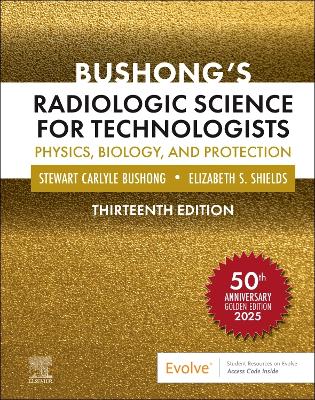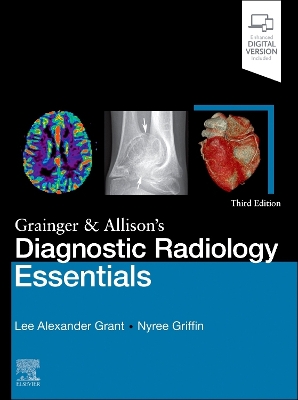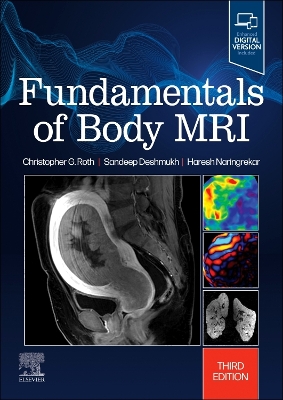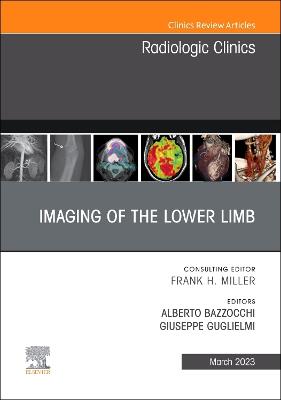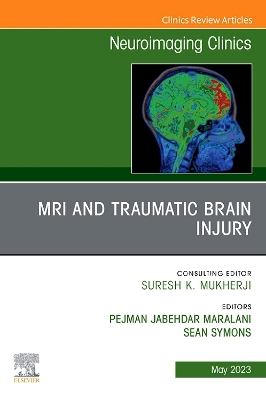Multiparametric Ultrasound for the Assessment of Diffuse Liver Disease
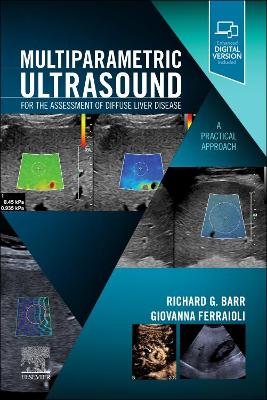 -10%
portes grátis
-10%
portes grátis
Multiparametric Ultrasound for the Assessment of Diffuse Liver Disease
A Practical Approach
Ferraioli, Giovanna; Barr, Richard G.
Elsevier - Health Sciences Division
11/2022
256
Mole
Inglês
9780323874793
15 a 20 dias
Guadalupe Garcia-Tsao (Yale University School of Medicine, CT, USA)
Chronic liver disease is a substantial world-wide problem. It can be due to a wide range of etiologic agents. Any process that leads to chronic inflammation can progress to chronic liver disease. Its major consequence is increasing deposition of fibrous tissue within the liver leading to cirrhosis with its complications, such as portal hypertension, hepatic insufficiency and hepatocellular carcinoma.
Key words: chronic liver disease, liver fibrosis, shear wave elastography, hepatitis B, hepatitis C, NAFLD, NASH.
2. Liver stiffness measurement techniques basics
Giovanna Ferraioli, Mark L Palmeri (Duke University, NC, USA), Richard G Barr
Liver elastography can be performed with various techniques. These include both ultrasound-based elastography and magnetic resonance elastography. The ultrasound methods include strain elastography (SE), VCTE, and ARFI techniques (pSWE and 2D-SWE). SE is limited in evaluation of liver stiffness and will not be presented in this book.
Key words: VCTE, pSWE, 2D-SWE, ARFI, shear wave elastography, MRE, vibration elastography, phantom studies.
a. TE
b. ARFI techniques
c. MRE
d. Vibratory Techniques
3. Protocol for acquisition
Giovanna Ferraioli, Richard G Barr
For all of the ultrasound techniques (vibration-controlled transient elastography, point shear wave elastography and two-dimensional shear wave elastography) the patient is studied in the supine or slight left lateral decubitus position. The protocol for a correct acquisition will be presented in details.
Key words: VCTE, pSWE, 2D-SWE, ARFI, shear wave elastography, liver stiffness.
a. General protocol
b. Quality Assessment
i. Vendor specific quality assessment
4. Tips and Tricks
Giovanna Ferraioli, Richard Barr
For a reliable acquisition, several factors should be taken into account. They include depth for measurement, presence of liver steatosis, transducer frequency, transducer position, number of measurements, confounders and so on. All these factors will be analyzed in details.
Key words: reliability, accuracy studies.
5. Artifacts
Giovanna Ferraioli, Mark Palmeri (Duke University, NC, USA), Richard G Barr
Identification of the artifacts is of outmost importance for the interpretation. Knowing them is also important for acquiring the best images for accurate diagnosis.
Key words: reverberation, attenuation, failure, phantoms studies.
a. TE
b. ARFI techniques
c. MRE
6. Staging liver fibrosis with shear wave elastography
Giovanna Ferraioli, Davide Roccarina (Careggi University Hospital, Florence, Italy), Jonathan Dillman (University of Cincinnati College of Medicine, OH, USA), Richard G Barr
As of today, shear wave elastography has been accepted as a reliable substitute of liver biopsy in several clinical scenarios, mainly in patients with viral etiologies and/or NAFLD/NASH. The role of shear wave elastography in several etiologies of liver disease and in the pediatric population will be presented.
Key words: liver stiffness, hepatitis B, hepatitis C, NAFLD, NASH, primary sclerosing cholangitis, autoimmune hepatitis, alcoholic hepatitis, cystic fibrosis, biliary atresia, Fontan circulation, children.
a. Viral etiologies
b. NAFLD/NASH
c. Other etiologies
d. Pediatrics
7. Portal hypertension: liver and spleen stiffness
Davide Roccarina (Careggi University Hospital, Florence, Italy)
Liver stiffness correlates with the severity of liver fibrosis up to the threshold of clinically significant portal hypertension. At this stage, the strength of the correlation between liver stiffness and fibrosis decreases, probably due to an increasing role played by extrahepatic factors. It has been shown that spleen stiffness correlates better than liver stiffness with the portal pressures. Studies will be presented.
Key words: HVPG, portal hypertension, stiffness.
8. Liver stiffness beyond the staging of liver fibrosis
Giovanna Ferraioli, Richard G Barr
An increase of liver stiffness has been reported in patients with liver congestion. It is a "confounding factor" for the evaluation of liver fibrosis. However, in the setting of right-sided heart failure liver stiffness seems directly influenced by central venous pressure and can be used as a prognostic marker to predict cardiac events.
Key words: heart failure, liver congestion, hepatic sinusoidal obstruction, Fontan circulation, Budd Chiari syndrome, valvular diseases.
9. Guideline
Giovanna Ferraioli, Richard G Barr
The availability of accurate non-invasive methods for the assessment of liver fibrosis was an important breakthrough and has prompted ultrasound federations of societies as well as clinical or radiological societies to issue international guidelines or consensus on the clinical applications of the SWE techniques. This chapter presents the most important guidelines from a practical point of view.
Key words: guidelines, WFUMB, EFSUMB, SRU, shear wave elastography, diffuse liver disease, chronic viral hepatitis, ARFI techniques, NAFLD.
a. Reporting results
10. Non-invasive assessment of liver steatosis with US techniques
Giovanna Ferraioli, Richard G Barr
An accurate estimation of the fat in the liver is important in the diagnostic work-up of patients with non-alcoholic fatty liver disease. Ultrasound methods of fat quantification have been developed. They will be presented in details.
Key words: attenuation coefficient, ATI, ATT, UGAP, backscatter coefficient, speed of sound, steatosis.
11. Dispersion
Katsutoshi Sugimoto (Tokyo Medical University, Japan), Giovanna Ferraioli, Richard G Barr
The shear wave speed obtained in liver stiffness estimation is dependent on the ARFI frequency. The dispersion is the estimate of the stiffness at various ARFI frequencies. The relationship between dispersion and inflammation will be presented. Detection and grading of inflammation would add important information in the diagnosis, management, and follow-up of patients with chronic liver diseases.
Key words: necro-inflammation, ARFI frequency, shear wave elastography.
12. Focal liver lesions - short section
Stephanie R Wilson (University of Calgary, Canada)
Several reports document that malignant lesions are more likely stiffer than benign lesions. However, there is significant overlap. Both benign and malignant lesions can be soft or stiff compared to normal liver. In addition, the stiffness of the liver varies significantly with fibrosis.
Key words: hemangioma, focal steatosis, focal nodular hyperplasia, hepatocellular carcinoma, cholangiocarcinoma, liver metastasis.
13. Conclusions
Giovanna Ferraioli, Richard G Barr
The value of shear wave elastography in diffuse liver disease will be highlighted.
Key words: shear wave elastography, liver stiffness, spleen stiffness, liver steatosis, chronic liver disease.
Guadalupe Garcia-Tsao (Yale University School of Medicine, CT, USA)
Chronic liver disease is a substantial world-wide problem. It can be due to a wide range of etiologic agents. Any process that leads to chronic inflammation can progress to chronic liver disease. Its major consequence is increasing deposition of fibrous tissue within the liver leading to cirrhosis with its complications, such as portal hypertension, hepatic insufficiency and hepatocellular carcinoma.
Key words: chronic liver disease, liver fibrosis, shear wave elastography, hepatitis B, hepatitis C, NAFLD, NASH.
2. Liver stiffness measurement techniques basics
Giovanna Ferraioli, Mark L Palmeri (Duke University, NC, USA), Richard G Barr
Liver elastography can be performed with various techniques. These include both ultrasound-based elastography and magnetic resonance elastography. The ultrasound methods include strain elastography (SE), VCTE, and ARFI techniques (pSWE and 2D-SWE). SE is limited in evaluation of liver stiffness and will not be presented in this book.
Key words: VCTE, pSWE, 2D-SWE, ARFI, shear wave elastography, MRE, vibration elastography, phantom studies.
a. TE
b. ARFI techniques
c. MRE
d. Vibratory Techniques
3. Protocol for acquisition
Giovanna Ferraioli, Richard G Barr
For all of the ultrasound techniques (vibration-controlled transient elastography, point shear wave elastography and two-dimensional shear wave elastography) the patient is studied in the supine or slight left lateral decubitus position. The protocol for a correct acquisition will be presented in details.
Key words: VCTE, pSWE, 2D-SWE, ARFI, shear wave elastography, liver stiffness.
a. General protocol
b. Quality Assessment
i. Vendor specific quality assessment
4. Tips and Tricks
Giovanna Ferraioli, Richard Barr
For a reliable acquisition, several factors should be taken into account. They include depth for measurement, presence of liver steatosis, transducer frequency, transducer position, number of measurements, confounders and so on. All these factors will be analyzed in details.
Key words: reliability, accuracy studies.
5. Artifacts
Giovanna Ferraioli, Mark Palmeri (Duke University, NC, USA), Richard G Barr
Identification of the artifacts is of outmost importance for the interpretation. Knowing them is also important for acquiring the best images for accurate diagnosis.
Key words: reverberation, attenuation, failure, phantoms studies.
a. TE
b. ARFI techniques
c. MRE
6. Staging liver fibrosis with shear wave elastography
Giovanna Ferraioli, Davide Roccarina (Careggi University Hospital, Florence, Italy), Jonathan Dillman (University of Cincinnati College of Medicine, OH, USA), Richard G Barr
As of today, shear wave elastography has been accepted as a reliable substitute of liver biopsy in several clinical scenarios, mainly in patients with viral etiologies and/or NAFLD/NASH. The role of shear wave elastography in several etiologies of liver disease and in the pediatric population will be presented.
Key words: liver stiffness, hepatitis B, hepatitis C, NAFLD, NASH, primary sclerosing cholangitis, autoimmune hepatitis, alcoholic hepatitis, cystic fibrosis, biliary atresia, Fontan circulation, children.
a. Viral etiologies
b. NAFLD/NASH
c. Other etiologies
d. Pediatrics
7. Portal hypertension: liver and spleen stiffness
Davide Roccarina (Careggi University Hospital, Florence, Italy)
Liver stiffness correlates with the severity of liver fibrosis up to the threshold of clinically significant portal hypertension. At this stage, the strength of the correlation between liver stiffness and fibrosis decreases, probably due to an increasing role played by extrahepatic factors. It has been shown that spleen stiffness correlates better than liver stiffness with the portal pressures. Studies will be presented.
Key words: HVPG, portal hypertension, stiffness.
8. Liver stiffness beyond the staging of liver fibrosis
Giovanna Ferraioli, Richard G Barr
An increase of liver stiffness has been reported in patients with liver congestion. It is a "confounding factor" for the evaluation of liver fibrosis. However, in the setting of right-sided heart failure liver stiffness seems directly influenced by central venous pressure and can be used as a prognostic marker to predict cardiac events.
Key words: heart failure, liver congestion, hepatic sinusoidal obstruction, Fontan circulation, Budd Chiari syndrome, valvular diseases.
9. Guideline
Giovanna Ferraioli, Richard G Barr
The availability of accurate non-invasive methods for the assessment of liver fibrosis was an important breakthrough and has prompted ultrasound federations of societies as well as clinical or radiological societies to issue international guidelines or consensus on the clinical applications of the SWE techniques. This chapter presents the most important guidelines from a practical point of view.
Key words: guidelines, WFUMB, EFSUMB, SRU, shear wave elastography, diffuse liver disease, chronic viral hepatitis, ARFI techniques, NAFLD.
a. Reporting results
10. Non-invasive assessment of liver steatosis with US techniques
Giovanna Ferraioli, Richard G Barr
An accurate estimation of the fat in the liver is important in the diagnostic work-up of patients with non-alcoholic fatty liver disease. Ultrasound methods of fat quantification have been developed. They will be presented in details.
Key words: attenuation coefficient, ATI, ATT, UGAP, backscatter coefficient, speed of sound, steatosis.
11. Dispersion
Katsutoshi Sugimoto (Tokyo Medical University, Japan), Giovanna Ferraioli, Richard G Barr
The shear wave speed obtained in liver stiffness estimation is dependent on the ARFI frequency. The dispersion is the estimate of the stiffness at various ARFI frequencies. The relationship between dispersion and inflammation will be presented. Detection and grading of inflammation would add important information in the diagnosis, management, and follow-up of patients with chronic liver diseases.
Key words: necro-inflammation, ARFI frequency, shear wave elastography.
12. Focal liver lesions - short section
Stephanie R Wilson (University of Calgary, Canada)
Several reports document that malignant lesions are more likely stiffer than benign lesions. However, there is significant overlap. Both benign and malignant lesions can be soft or stiff compared to normal liver. In addition, the stiffness of the liver varies significantly with fibrosis.
Key words: hemangioma, focal steatosis, focal nodular hyperplasia, hepatocellular carcinoma, cholangiocarcinoma, liver metastasis.
13. Conclusions
Giovanna Ferraioli, Richard G Barr
The value of shear wave elastography in diffuse liver disease will be highlighted.
Key words: shear wave elastography, liver stiffness, spleen stiffness, liver steatosis, chronic liver disease.

